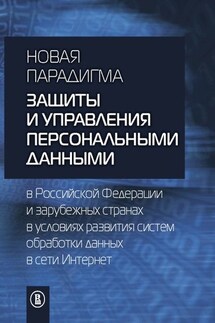Введение в аддиктологию - страница 21
16.Cloninger, C. R. (1986). Unified biosocial theory of personality and its role in the development of anxiety. Psychiatric Developments, 3(2), 167–226.
17.Cloninger, C. R. (1987). Asystematic method for clinical description and classification of personality variants: Aproposal. Archives of General Psychiatry, 44(6), 573–588.
18.Cummings, J. L. (2000). Awindow on the role of dopamine in addiction disorders. Journal of Neurology Neurosurgery and Psychiatry, 68(4), 404. https://doi.org/10.1136/jnnp.68.4.404
19.Di Chiara, G., Imperato, A. (1988). Drugs abused by humans preferentially increase synaptic dopamine concentrations in the mesolimbic system of freely moving rats. Proceedings of the National Academy of Sciences of the United States of America, 85(14), 5274–5278. https://doi.org/10.1073/pnas.85.14.5274
20.Di Chiara, Gaetano. (2002). Nucleus accumbens shell and core dopamine: Differential role in behavior and addiction. Behavioural Brain Research, 137(1–2), 75–114. https://doi.org/10.1016/S0166–4328(02)00286–3
21.Di Chiara, Gaetano, Bassareo, V., Fenu, S., De Luca, M. A., Spina, L., Cadoni,C., Acquas, E., Carboni, E., Valentini, V., Lecca, D. (2004). Dopamine and drug addiction: The nucleus accumbens shell connection. Neuropharmacology, 47(SUPPL. 1), 227–241. https://doi.org/10.1016/j.neuropharm.2004.06.032
22.Edwards, W. (1961). Behavioral decision theory. Annual Review of Psychology 12, 12, 473–498.
23.Fiorino, D. F., Coury, A., Phillips, A. G. (1997). Dynamic changes in nucleus accumbens dopamine efflux during the Coolidge effect in male rats. Journal of Neuroscience, 17(12), 4849–4855. https://doi.org/10.1523/jneurosci.17–12–04849.1997
24.Franken, I. H. A., Booij, J., Van Den Brink, W. (2005). The role of dopamine in human addiction: From reward to motivated attention. European Journal of Pharmacology, 526(1–3), 199–206. https://doi.org/10.1016/j.ejphar.2005.09.025
25.Gleick, J. (2011). Chaos: making a new science. In Open Road, New York.
26.Goldstein, R. Z., Leskovjan, A. C., Hoff, A. L., Hitzemann, R., Bashan, F., Khalsa, S. S., Wang, G. J., Fowler, J. S., Volkow, N. D. (2004). Severity of neuropsychological impairment in cocaine and alcohol addiction: Association with metabolism in the prefrontal cortex. Neuropsychologia, 42(11), 1447–1458. https://doi.org/10.1016/j.neuropsychologia.2004.04.002
27.Goldstein, R. Z., Volkow, N. D. (2002). Drug addiction and its underlying neurobiological basis: Neuroimaging evidence for the involvement of the frontal cortex. American Journal of Psychiatry, 159(10), 1642–1652. https://doi.org/10.1176/appi.ajp.159.10.1642
28.Grant, S., London, E. D., Newlin, D. B., Villemagne, V. L., Liu, X., Contoreggi,C., Phillips, R. L., Kimes, A. S., Margolint, A. (1996). Activation of memory circuits during cue-elicited cocaine craving. Proceedings of the National Academy of Sciences, 93(21), 12040–12045. https://doi.org/10.1073/pnas.93.21.12040
29.Grimm, J. W., Hope, B. T., Wise, R. A., Shaham, Y. (2001). Incubation of cocaine craving after withdrawal. Nature, 412(6843), 141–142. https://doi.org/10.1038/35084134
30.Hari, J. (2015). Chasing the scream: The first and last days of the war on drugs. In Bloomsbury Publishing USA.
31.Heather, N., Segal, G. (2017). Addiction and choice: rethinking the relationship. In Oxford University Press









